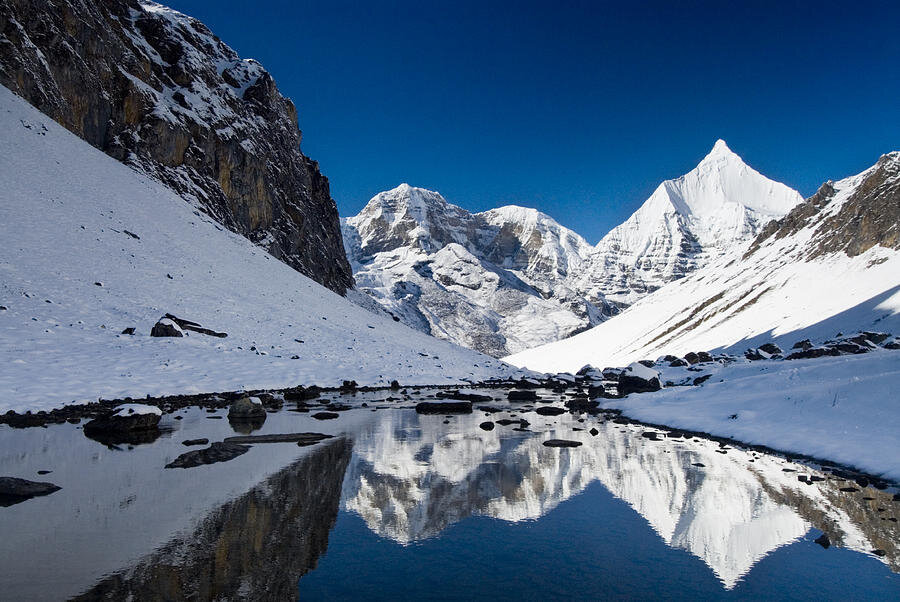
The Black-necked Cranes in Bhutan (Grus nigricollis) are winter visitors during late October to mid-March to the Phobjika Valley from the Tibetan Plateau where they breed. They visit the Phobhjikha valley in large numbers, which is a declared protected area for the cranes, and also to other valleys in smaller numbers in central and eastern Bhutan. On arrival in the Phobhjikha (also called the ‘Gangtey Valley’) they are seen to circle the Gangteng Monastery three times as if they are paying obeisance to the gods in the monastery and repeat this act while returning to Tibet Ñ–n early spring. The Jigme Dorji Wangchuk Sanctuary, adjoining the Phobjika Valley across the Black Mountains Range, has within its precincts, the crane wintering area at Bumdeling, which also has been declared a protected area.

Bhutan has taken special care to protect this species and has established the Phobjikha Conservation Area covering 163 square kilometers (63 sq mi) of the valley under the Royal Society for the Protection of Nature (RSPN) and for the purpose of conservation management. The conservation area was established by Bhutan in the Phobjika Valley in 2003, and RSPN has the mandate to protect not only the Black-necked Cranes but also 13 other vulnerable species.
In Bhutan, the Black-necked Cranes have a celebrity status, as witnessed by the Crane Festival held every year, soon after their arrival from the Tibetan Plateau, in the courtyards of the Gangten Gonpa in Phobjika Valley. Many tourists also visit the valley to witness this festival.
On March, 13, two adults, probably a couple, and a juvenile, which flew from Phobjikha valley in Wangdue, were the last set of black-necked cranes to leave for their summer habitat in Tibet.

The winged visitors must have either left for Bamtsho or Yamtsho and Yumstho, in Tibet, where they roost for more than six months, said the royal society for the protection of nature’s (RSPN) field coordinator in Phobjikha, Jigme Tshering. Yamtsho and Yumstho are around 300km from Phobjikha, while Bamtsho is 200km, a day’s journey from the valley.
Jigme Tshering said, the first group, consisting of 10 adults, flew on February 9, followed by two groups ranging from two to 50 cranes.
The winter migration from Tibet starts from the third week of October until the last week of December, and in spring the birds fly back to Tibet from the second week of February until the third week of March.The last group of cranes migrated just as villagers in Phobjikha began potato plantation. The first two adult cranes touched down in the valley October last year when villagers started harvesting potatoes.Of the 422 cranes roosting in the valley in 2013-14 winter, 42 were juveniles. In 2012 and 2013 winter, of the 368 cranes that roosted, 46 were juveniles. Jigme Tshering said this was the highest number of cranes RSPN recorded so far in the valley after they begun the count in 1986, when only 120 cranes were recorded.
Of the estimated 11,000 global black-necked crane population, 500 of them fly to winter habitats of Bumdeling in Trashiyangtse, Chumey in Bumthang and Phobjikha in Wangdue.





